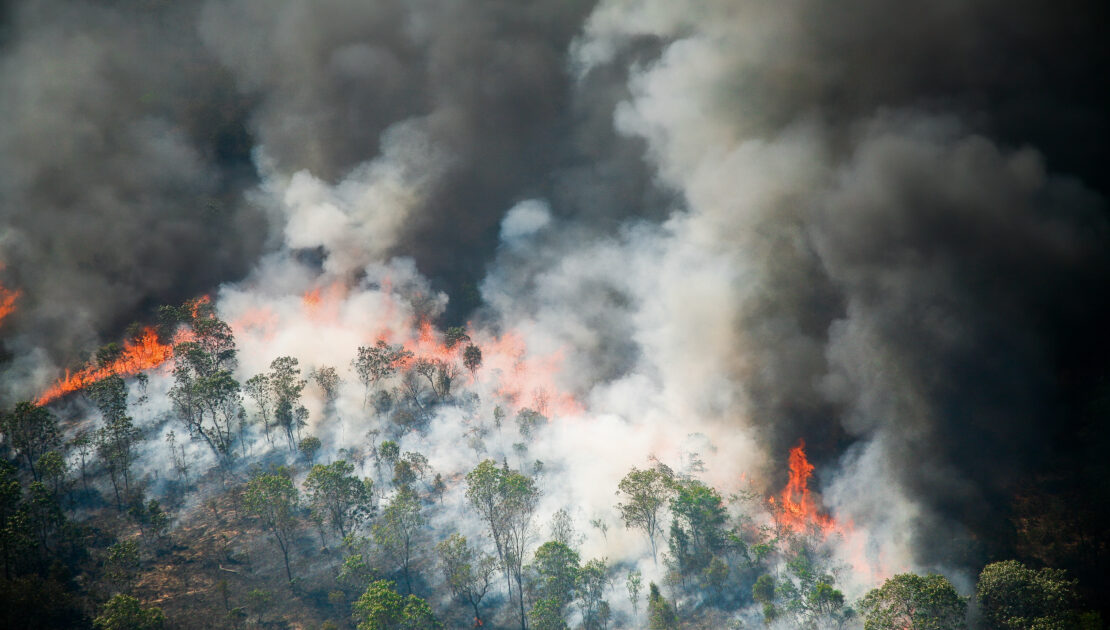From Floods to Fires, Here Are Climate Change's Impacts on Construction Insurance

Adapting the construction industry to the reality of climate change
These extreme weather-related events are having a very real impact on the industry. One issue occurs right at the start of the construction process – choosing a viable location and then, from there, what materials will be used.
Keeping an eye on bodies of water that have a tendency to flood – the Mississippi River or the Red River in Manitoba being two examples – is one thing, but it is a concern for construction and insurance industries alike when these big rain events occur in an area, like a desert, where they are harder to prepare for. He pointed to the intense rains that flooded California in August as one example. A deluge of rain on land that is normally desert-like, means that the ground is likely saturated, and any construction work will be delayed for some time until the ground dries.
Construction companies also need to consider the types of materials that they use “because temperatures are reaching new heights in locations they otherwise have not previously,” he said. Heat can cause building materials to change in size and lose natural moisture. From there, the objects either retain that heat or quickly lose it, dependent on their makeup. Because the materials used differ in composition, the heat can affect them unevenly.
What impact does this have on insurance?
The number one impact of climate change on the construction insurance sphere is exactly as you may expect – more large claims.
“We’re certainly seeing more claims come in,” Herron said. “Claims of higher intensity are also emerging.” Anecdotally, increased severity means more damage – if a storm 10 years ago would have flooded an acre, a storm today may flood two acres.
“So it’s not only the number of occurrences of claims, but also the intensity of the events that has increased,” Herron said.
Climate change impact on contractors’ equipment insurance
Contractors’ equipment coverage is another impacted segment.
By nature it is a floating coverage, “which means that it can go anywhere within the described territory within the policy,” he said. Because of its wandering nature, it makes it harder to predict and model for because the equipment could be anywhere on any given day – a flood plain on Friday, a desert on Tuesday.
“Due to the nature of this coverage being a floater, it makes it difficult to understand where all of our exposures are at any one time,” he explained. “So that’s one of the biggest hurdles we have as an industry.” He admitted that this type of coverage is an area where “we need to get to an understanding as to how we protect it a bit better.”
As we have all seen across the continent this past summer, evacuation orders can come suddenly, with only a moment’s notice for residents. Construction equipment can be moved, yes, but moving heavy construction vehicles can take time – time which may not be available as a fire bears down.
“And you don’t want to be in the way of people that are fighting the fires or any of the other emergency vehicles,” or people fleeing the town too. “You’ve got to prioritize the people in those situations.”
Climate change impact on installation floater/builders’ risk insurance
Installation floater/builders’ risk insurance is another area impacted by climate change and severe weather events.
These policies cover sewer work, road work, new construction builds, etc. High winds and rain can delay or hinder completion of these projects, impacting insurance because of increased exposure that may not have been there even a decade ago.
Communicating a plan of action ahead of time
For Herron, the biggest factor in risk mitigation is “communication” between insurers and their brokers, “having discussions on where clients are working, where the contractors are working – what is the plan?”
Those plans can include preparing for, as an example, if a forest fire appears on the horizon 100km or 50km away.
“Having a plan for these climate events allows us to become more resilient to the changing climate, which cumulates to a better understanding of the risks that could potentially harm the contractors’ business,” he said. “It’ll amount to working with insurers to communicate the work that’s being undertaken.”
Herron noted that brokers can play an important role in bridging the gap between insurers and construction companies.
“The intensity of these events are increasing and we need to have good communication; between insurers, brokers and clients,” he concluded. That is one way to help the industry prepare for the repercussions of climate change.
Article Published By: InsuranceBusinessMag.com
Article Written By: Desmond Devoy
